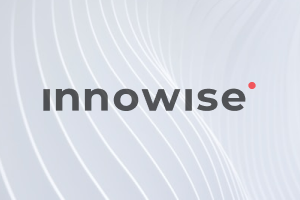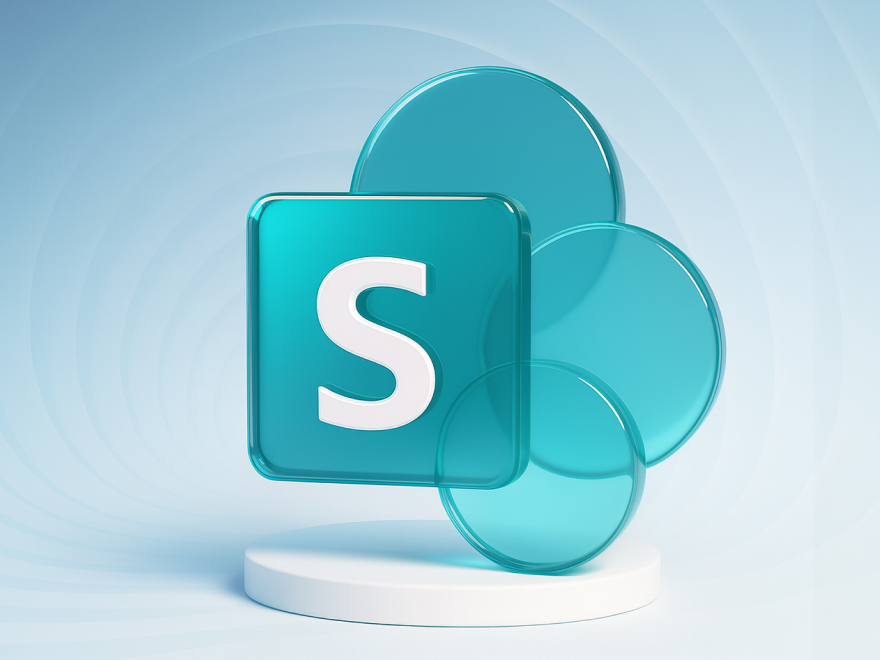Su mensaje ha sido enviado.
Procesaremos su solicitud y nos pondremos en contacto con usted lo antes posible.
El formulario se ha enviado correctamente.
Encontrará más información en su buzón.

Seleccionar idioma


Pasar de BizTalk a Health Connect permite a su organización sanitaria aprovechar una plataforma escalable y preparada para FHIR, creada para un tráfico API intenso y una implantación nativa en la nube.
Si ha confiado en BizTalk durante años, ya conoce sus puntos fuertes: los flujos hub-and-spoke fiables, el motor EDI y el acelerador HL7 mantienen los mensajes ADT, de laboratorio y de facturación en tiempo y forma. Pero el panorama de los datos sanitarios ha cambiado.
Los volúmenes de mensajes se están disparando, los clústeres de contenedores se han convertido en la norma y los archivos planos HL7 han dado paso a las API FHIR. La arquitectura de BizTalk se está quedando anticuada, ya que se ve sometida a cargas elásticas y carece de estándares modernos. Y como el soporte general para BizTalk Server 2020 finaliza el 11 de abril de 2028, cualquier proyecto nuevo se enfrenta a una ventana de soporte cada vez más pequeña.
Por eso, cuando los clientes acuden a mí en busca de un sustituto preparado para el futuro o de formas de potenciar sus flujos de trabajo con automatización de procesos empresariales, les dirijo a InterSystems Health Connect. Viene preparado para gestionar HL7, CDA y FHIR desde el primer momento, y está diseñado para la realidad de la sanidad moderna: API de flujo continuo, implementaciones en contenedores y paneles de control en tiempo real que ofrecen visibilidad de lo que fluye y hacia dónde. Puede ejecutarlo en Docker on-prem o en gestión completa en la nube, lo que mejor se adapte a su estrategia de cumplimiento y TI.
En esta guía, explicaré exactamente cómo pasar de BizTalk a Health Connect sin perder el sueño. Destacaré los puntos en los que BizTalk empieza a mostrar sus grietas, los puntos en los que Health Connect se hace cargo y lo que debe tener en cuenta para que no le pille desprevenido a mitad de camino. También compartiré mi opinión sobre cómo debe ser un buen socio de migración, ya que el equipo adecuado puede marcar la diferencia entre un costoso paso en falso y una actualización que simplemente funcione.
Al final, tendrá un plan claro y realista para poner fin a BizTalk y entrar en la próxima década con confianza.
Si todavía utiliza BizTalk, dispone de una plataforma estable, pero no se diseñó para las grandes demandas de datos sanitarios. Entre los inminentes plazos de finalización, los rígidos límites de escalado y las tediosas operaciones, BizTalk puede ralentizarle más de lo que le ayuda. Health Connect, en cambio, se ha creado para el tráfico de API modernas y la implantación nativa en la nube. Resuelve sus mayores quebraderos de cabeza con BizTalk en un solo paquete, para que pueda centrarse en prestar asistencia en lugar de combatir el fuego del middleware.
BizTalk ha prestado un servicio fiable a las organizaciones sanitarias durante más de dos décadas. Sigue funcionando bien en entornos estables y de bajo volumen con interfaces fijas. Pero para los hospitales que se enfrentan a volúmenes de datos cada vez mayores, exigencias de cumplimiento más estrictas y la necesidad de ciclos de entrega más rápidos, BizTalk ya no es siempre una de las soluciones más eficaces soluciones informáticas sanitarias.
Microsoft finaliza el soporte general para BizTalk Server 2020 el 11 de abril de 2028 y abandona el soporte ampliado el 9 de abril de 2030. Después de esa fecha, no habrá parches de seguridad ni de cumplimiento normativo. En un entorno en el que las auditorías de la HIPAA y el GDPR nunca se detienen, el middleware sin parches es un riesgo evitable.
Supongamos que eres el responsable de TI de un hospital de 300 camas y acabas de descubrir una vulnerabilidad crítica de BizTalk 2016. Se pone en contacto con Microsoft, pero descubre que los parches principales dejaron de aplicarse hace dos años. Acaba presupuestando cuatro semanas de tiempo de su equipo, además de unos elevados honorarios de consultoría, solo para elaborar un hotfix puntual. El reloj está en hora, así que la cuestión de la migración no es "si", sino "cuándo".
Los hospitales de hoy en día transmiten terabytes de imágenes, telemetría en tiempo real y un tráfico de API FHIR vertiginoso. El diseño "hub-and-spoke" de BizTalk se estanca por debajo de los 300-500 mensajes HL7 por segundo, incluso en hardware potente. Los motores modernos, nativos de contenedores, añaden réplicas y siguen funcionando, algo para lo que BizTalk simplemente no fue creado.
Por ejemplo, está de guardia durante la oleada de VSR del invierno pasado. Su centro de 500 camas ve cómo de repente su alimentación ADT alcanza los 1.200 mensajes por segundo. Las colas de BizTalk se disparan y su equipo de admisiones espera diez minutos para actualizar cada paciente. En cambio, un motor nativo de contenedores puede generar réplicas en cuestión de minutos y eliminar el retraso en menos de cinco.
Ejecutar BizTalk sigue significando hacer malabarismos con adaptadores personalizados, despliegues GAC y un motor de reglas que parece de 2009. Los especialistas sénior en BizTalk son escasos (y caros), y un simple ajuste de mapa puede tragarse un sprint entero. Esta fricción se traduce en mayores costes de mantenimiento y una entrega más lenta de las nuevas interfaces.
Imagine tener que cambiar un campo OBX en una interfaz de laboratorio. Con BizTalk, hay que reconstruir mapas, volver a desplegar DLL en el GAC, rebotar hosts y volver a probar flujos durante todo un sprint. En Health Connect, se escriben tres líneas de lenguaje de transformación de datos, se reinician los pods en una actualización continua y se vuelve a la pausa para el café en menos de una hora.
Health Connect se creó para evitar estos cuellos de botella. Es compatible con HL7, CDA y FHIR de forma nativa, se despliega limpiamente en Docker o Kubernetes e incluye paneles de supervisión en tiempo real. Así que, a continuación, voy a profundizar en por qué los equipos eligen Health Connect y cómo hacer el cambio sin ningún drama.
Las juntas directivas de los hospitales se están dando cuenta de que las herramientas heredadas como BizTalk se han convertido en cuellos de botella. Las nuevas normativas, los flujos de trabajo en la nube y los módulos AI necesitan un intercambio de datos moderno y flexible, no un middleware heredado que se esfuerce por seguir el ritmo.
Seguir con BizTalk implica mayores costes de hardware adicional, más horas de TI y mayores riesgos de cumplimiento cuando finalice la asistencia. En este caso, migrar a Health Connect es un movimiento estratégico. Obtendrá una interoperabilidad auténtica, compatibilidad integrada con el escalado, un menor coste total de propiedad y mucho menos estrés la próxima vez que se produzca una auditoría de la HIPAA o el GDPR.
La simple fontanería de datos ya no es suficiente. Necesita intercambios de datos rápidos y basados en estándares que impulsen sus análisis, respalden la atención virtual y alimenten sus sistemas AI sin tener que reescribirlo todo cada trimestre.
Los sistemas aislados lo ralentizan todo. Cuando el laboratorio, el diagnóstico por imagen y la HCE viven en colas separadas, los médicos esperan, se producen errores y los pequeños retrasos se convierten en estancias más largas y costes más elevados.
Otra razón por la que las juntas directivas de los hospitales se alejan de BizTalk es el coste y el tiempo, dos recursos que siempre escasean en la sanidad.
Las violaciones de la privacidad y los fallos en las auditorías son acontecimientos que acaban con la carrera profesional en la sanidad, por lo que cada capa de integración debe demostrar a dónde ha ido cada mensaje y quién lo ha tocado. Por eso el cumplimiento de las normas ocupa un lugar destacado en la agenda de migración, junto con el coste y la velocidad.
Las organizaciones sanitarias que funcionan con BizTalk se enfrentan a crecientes riesgos y tensiones por el volumen de datos actual. La plataforma Health Connect enlaza sistemas en tiempo real, es compatible con HL7 y FHIR desde el primer momento y cumple la normativa HIPAA y local. Los equipos de TI conservan el control total, los médicos obtienen los datos actualizados que necesitan y los pacientes se benefician de una mejor atención.

Gestor de cartera, Tecnologías médicas y sanitarias
Ahora vamos a desglosar exactamente en qué puntos Health Connect aventaja a BizTalk, uno al lado del otro, para que pueda ver cómo se manifiesta cada ventaja en las operaciones sanitarias cotidianas. He añadido ejemplos rápidos de cada punto para ayudarle a ver cómo podrían ser estos cambios para su equipo.
Escalar BizTalk siempre se reduce a comprar más hardware y pasar horas actualizando configuraciones. Cuando los volúmenes de datos se disparan, por ejemplo, tras añadir una nueva HCE o conectar un sistema de radiología, el equipo de TI se pasa las noches en vela para asegurarse de que nada se rompe.
Por otro lado, Health Connect gestiona el escalado automáticamente, ya se ejecute en las instalaciones, en la nube o en ambas. Cuando aumentan los volúmenes de mensajes, añade recursos en segundo plano, lo que evita la confusión o la intervención manual.
Supongamos que su hospital pone en marcha tres nuevas clínicas en un fin de semana. Con BizTalk, tendría que apresurarse a configurar más servidores y ajustar la configuración bajo presión. Con Health Connect, el nuevo tráfico de mensajes simplemente se absorbe, y tu equipo no tiene que tocar nada.
BizTalk se basa en EDI de principios de la década de 2000 y en flujos de trabajo basados en archivos. Para manejar datos sanitarios, hay que añadir HL7 Accelerator o crear adaptadores personalizados. FHIR se sitúa completamente fuera del conjunto de herramientas básicas. Cada nuevo estándar implica instalar otro complemento y tener que lidiar con un mantenimiento adicional.
Health Connect toma un camino diferente. Es compatible con HL7 v2, FHIR (DSTU2 a R4), CDA, DICOM y los principales perfiles IHE. Conéctelo a su HCE, HIS, sistema de diagnóstico por imagen o cualquier aplicación basada en API y los datos empezarán a fluir sin necesidad de adaptadores adicionales.
Supongamos que su sistema sanitario incorpora una clínica de cardiología que utiliza una HCE en la nube con API FHIR. Con Health Connect, puede registrar el punto final de la clínica, asignar un puñado de recursos y empezar a intercambiar datos esa misma tarde. Con BizTalk, primero tendría que buscar un adaptador FHIR, programar transformaciones personalizadas y cruzar los dedos durante el siguiente ciclo de parches.
Configurar BizTalk a menudo significa llamar a un especialista .NET, que tiene que hacer malabarismos con soluciones de Visual Studio, múltiples consolas de gestión y escribir manualmente XSLT. Los pequeños ajustes pueden restar días a los ciclos de creación, despliegue y reinicio, lo que convierte las actualizaciones sencillas en proyectos de gran envergadura.
Health Connect le permite trabajar en una consola web, cargar esquemas de origen y destino en un lienzo visual, dibujar conexiones entre campos y pulsar Desplegar. La mayoría de los cambios se realizan en cuestión de minutos y no requieren conocimientos de programación.
Por ejemplo, su equipo necesita añadir una nueva fuente de laboratorio HL7. Con Health Connect, cargan el esquema del feed, lo asignan al recurso FHIR DiagnosticReport, hacen clic en Deploy y empiezan a validarlo antes de comer. En BizTalk, esa misma tarea implicaría la configuración de un proyecto de Visual Studio, la creación manual de un mapa XSLT, el registro de DLL en la caché global de ensamblados y el reinicio de hosts durante varios días.
Proteger los datos de los pacientes es una expectativa fundamental. Los auditores esperan pruebas fehacientes de que cada mensaje está cifrado, el acceso controlado y el rastro intacto.
Con BizTalk, sólo cumplirá la normativa si todas las actualizaciones acumulativas y los parches de seguridad llegan a tiempo. El soporte general finaliza en abril de 2028, por lo que la aplicación de parches pronto dependerá de soluciones personalizadas. Cada ciclo sigue implicando un tiempo de inactividad planificado, pruebas adicionales y un registro continuo de solicitudes de cambio.
Health Connect llega preparado para HIPAA, GDPR e ISO 27001. El acceso basado en funciones, el cifrado en reposo y en tránsito y los registros de auditoría sellados están activados desde el primer día. Una única consola web muestra cada conexión y cada acción del usuario.
Imagine que un auditor solicita un registro semestral de quién ha accedido a los datos radiológicos. Con Health Connect, puede exportar el informe en unos pocos clics. Con BizTalk, hay que unir los registros de adaptadores y servidores, y puede que al final queden lagunas. Health Connect mantiene la rutina del cumplimiento en lugar de la confusión.
BizTalk exige un tiempo de inactividad programado, instalaciones de actualizaciones acumulativas y un equipo experto en compatibilidad con Windows, SQL Server y Visual Studio. Además, como he señalado anteriormente, el soporte general para BizTalk Server 2020 finaliza el 11 de abril de 2028, y el soporte ampliado finaliza el 9 de abril de 2030. Si no se aplica un parche, se corre el riesgo de incumplir la normativa y de sufrir interrupciones imprevistas.
Health Connect libera de esa carga a su personal. Puede ejecutarlo en contenedores in situ u optar por el servicio gestionado en la nube. Cualquiera de las dos opciones ofrece actualizaciones automáticas, conmutación por error integrada y georredundancia para que su equipo dedique tiempo a las integraciones en lugar de al mantenimiento del servidor.
Imagine que llega la actualización trimestral de seguridad. Con BizTalk, los administradores reservan un fin de semana para aplicar los parches, probar la compatibilidad y resolver cualquier problema. Con Health Connect Cloud, la actualización se aplica sola durante una ventana programada y le envía un correo electrónico de confirmación. Su equipo se centrará en los nuevos proyectos en lugar de ocuparse de los servidores.
El precio real de BizTalk va mucho más allá de los derechos de licencia. Cada nueva ronda de actualizaciones conlleva la compra de hardware, la ampliación de la capacidad de SQL y fines de semana libres para que los ingenieros senior apliquen parches y realicen pruebas. Incluso Directrices de Microsoft muestran que las cargas del mundo real suelen exigir mucho más que las especificaciones mínimas, lo que eleva los costes de los servidores, la energía y la refrigeración.
Health Connect recorta esos gastos en tres frentes. En primer lugar, se ejecuta como un contenedor ligero que sólo se amplía cuando aumenta el tráfico de mensajes, por lo que se paga por lo que realmente se utiliza. En segundo lugar, las actualizaciones rutinarias llegan automáticamente de InterSystems, lo que elimina las horas de trabajo que exige BizTalk. En tercer lugar, los precios de suscripción agrupan el soporte y las actualizaciones en una sola partida predecible, lo que ayuda a los equipos financieros a planificar los presupuestos con menos sorpresas.
Imagine una gran red sanitaria estadounidense que cambia 15 motores de integración distintos por Health Connect. Al trasladar 2.000 interfaces a un único motor gestionado por cuatro desarrolladores, podrían ahorrar unos $21 millones a lo largo del tiempo. Dejan de hacer malabarismos con herramientas y bastidores de hardware que se solapan y, en su lugar, utilizan una plataforma que se amplía durante los picos de carga y se reduce después.
Los cálculos también funcionan para los equipos más pequeños. Un hospital comunitario que cambia dos servidores BizTalk por un pequeño clúster de Health Connect puede recortar cinco cifras de su presupuesto anual de infraestructura y mantenimiento.
Las configuraciones de BizTalk pueden alargarse. Se pasa de una consola a otra, se conectan adaptadores personalizados y se espera a que alguien pruebe todos los archivos de configuración antes de empezar a trabajar de verdad. He visto a equipos perder un sprint entero sólo para conseguir un entorno lo suficientemente estable como para crear su primera interfaz.
Health Connect elimina ese retraso. Obtendrá plantillas preparadas, un mapeador visual y un plan de incorporación claro para que su equipo pueda conectar sistemas en días en lugar de semanas. Usted configura el flujo, ajusta algunas asignaciones, despliega y sigue adelante.
Supongamos que necesita implantar un nuevo estándar de prescripción electrónica antes de que acabe el trimestre. Con Health Connect, su equipo conecta las piezas FHIR adecuadas, ejecuta pruebas en un entorno aislado y las pasa a producción en el mismo sprint. Si intentara hacer lo mismo con BizTalk, probablemente tendría que esperar mucho tiempo a que los adaptadores y los parches se instalaran.
El motor de BizTalk envía todos los mensajes a través de un MessageBox respaldado por SQL. Cuando los volúmenes aumentan, la base de datos se hincha y aparece la latencia. Por lo tanto, los resultados, los pedidos o la alimentación de dispositivos pueden quedar en cola cuando el sistema está bajo presión, lo que ralentiza la velocidad a la que los datos llegan a la HCE.
Health Connect lo hace mejor por su diseño. Mueve grandes volúmenes de mensajes con una latencia muy baja. Esto se ha demostrado en grandes redes como eHealth Exchange, donde enormes cargas de transacciones diarias se mueven prácticamente en tiempo real. Cuando los datos fluyen con rapidez, los médicos realizan llamadas más rápidas a la cabecera del paciente.
Ahora, imagine una unidad de cuidados intensivos esperando los resultados de laboratorio STAT. Si BizTalk tiene una copia de seguridad, el mensaje HL7 puede tardar minutos en salir de la cola. Con Health Connect, ese mismo resultado aparece en la historia clínica del paciente casi de inmediato, lo que proporciona al personal las respuestas que necesitan cuando el tiempo apremia.
BizTalk le ata a Windows Server, SQL Server y Visual Studio. Alejarse significa reescribir los adaptadores y volver a formar al personal, por lo que muchos equipos se quedan bloqueados más tiempo del previsto.
Health Connect funciona de forma diferente. Se ejecuta en contenedores Linux o Windows, se conecta a cualquier nube y expone API abiertas para herramientas de terceros. Puede utilizar la base de datos o la plataforma de análisis que mejor se adapte a sus necesidades sin necesidad de reconstruir las integraciones básicas.
En caso de que su equipo de análisis quiera enviar encuentros de pacientes desidentificados a un servicio AI que no sea de Microsoft, BizTalk le obligaría a crear y mantener adaptadores personalizados y a superar revisiones de licencias. Con Health Connect, puede empaquetar paquetes FHIR y transmitirlos directamente a la cola en la nube que su grupo de ciencia de datos ya utiliza, sin barreras de propiedad ni trabajo adicional.
Los diagnósticos impulsados por AI, los sensores IoT de cabecera y los libros de contabilidad de consentimiento basados en blockchain llegan a un ritmo vertiginoso. El diseño local de BizTalk, centrado en las bases de datos, procede de otra época. Añadir nuevas tecnologías significa apilar adaptadores, escribir código personalizado y acumular deuda técnica. Los analistas señalan ahora los problemas de compatibilidad con la infraestructura moderna como una de las principales razones para retirar BizTalk pronto.
Health Connect se ha creado para los casos de uso del mañana. Se puede implantar en la nube, en las instalaciones o en clústeres híbridos. Expone API abiertas y alimenta los datos directamente a InterSystems IRIS for Health, que ya incluye AI y ganchos de aprendizaje automático. Cuando llegue la próxima oleada, como dispositivos de pacientes remotos que transmitan observaciones FHIR, se registra el punto final del dispositivo, se configura una regla de enrutamiento y se empiezan a ingerir datos al instante. La plataforma se escala sola sin necesidad de una reconstrucción completa.
Si implanta monitores remotos de glucosa para pacientes a domicilio, Health Connect le permite conectar los puntos finales FHIR, asignar observaciones a su HCE y empezar a recopilar datos en cuestión de horas. Con BizTalk, necesitaría semanas para desarrollar y probar adaptadores personalizados antes de que lleguen datos reales.
Para que le resulte más fácil, he elaborado una tabla rápida en la que se muestran exactamente las diferencias entre BizTalk y Health Connect en lo que respecta a la TI sanitaria. Utilice este resumen para ver qué plataforma se ajusta realmente a sus objetivos de escalabilidad, flexibilidad, coste y cumplimiento.
| Característica | BizTalk | Conectar con la salud |
|---|---|---|
| Escalabilidad | Problemas con grandes volúmenes de datos; el escalado es manual y requiere mucho hardware. | Escala de forma automática y eficiente, especialmente en entornos de nube |
| Flexibilidad de integración | Compatibilidad limitada con estándares modernos como FHIR y HL7; se necesitan adaptadores | Diseñado para el sector sanitario; compatible con FHIR, HL7, CDA, DICOM e IHE de forma nativa. |
| Modelo de implantación | Sólo en las instalaciones; grandes exigencias de hardware y mantenimiento | Cloud-nativo e híbrido; reduce la dependencia de la infraestructura local. |
| Facilidad de uso | Configuración y gestión complejas; curva de aprendizaje pronunciada | Las herramientas de bajo código y sin código simplifican la integración y aceleran la entrega |
| Conformidad y seguridad | Requiere actualizaciones manuales para mantener el cumplimiento normativo (por ejemplo, HIPAA, GDPR) | Funciones de conformidad integradas para cumplir las normas HIPAA, GDPR y otras normas reglamentarias específicas del sector sanitario |
| Mantenimiento y asistencia | Mantenimiento manual continuo y aplicación de parches; se necesitan recursos adicionales. | Actualizaciones automáticas, asistencia proactiva y mantenimiento más sencillo |
| Rentabilidad | Coste total elevado, especialmente a medida que se amplía y mantiene | Precios en la nube predecibles y menores costes operativos a lo largo del tiempo |
| Plazo de comercialización | Puesta en marcha lenta debido a dependencias y configuraciones complejas | Implantación rápida mediante plantillas y herramientas visuales |
| Velocidad de transferencia e integración de datos | Transferencias más lentas desde la arquitectura de mensajes heredada | Intercambio de datos en tiempo real con latencia mínima |
| Fijación del proveedor | Vinculado a la pila de Microsoft y a herramientas propietarias | Arquitectura abierta; flexible con sistemas de terceros |
| Preparado para el futuro | Diseño heredado; limitado por nuevas tecnologías como AI e IoT | Preparado para integrarse con AI, IoT y otras tecnologías avanzadas |
Abandonar una plataforma tan integrada como BizTalk nunca es un cambio rápido. En muchos hospitales, BizTalk se encuentra justo en el centro de los flujos de datos, atado a secuencias de comandos personalizadas, bases de datos antiguas y flujos de trabajo que se han ido ajustando durante años.
Por lo que veo, el verdadero trabajo se reduce a tres áreas difíciles: hacer frente a la complejidad del legado, migrar los datos reales y gestionar a las personas y los procesos durante el cambio. A continuación desglosaré cada una de ellas para que sepas dónde se esconden los escollos habituales.
Los entornos BizTalk de larga duración rara vez se mantienen sin cambios. A lo largo de los años, los administradores añaden canalizaciones personalizadas, mapas XSLT escritos a mano y adaptadores especializados para mantener sincronizadas las aplicaciones clínicas y de facturación obsoletas. Estos ajustes convierten a la plataforma en un apretado ovillo de lógica.
Para hacer frente a estos retos hay que empezar por una auditoría detallada previa a la migración. Catalogue cada interfaz, documente los ensamblajes personalizados y las reglas de transformación, y trace todas las dependencias. Asociarse con un equipo que haya guiado migraciones similares facilita la tarea de desenmarañar la web heredada antes de crear flujos nuevos y más limpios.
Trasladar datos sanitarios significa algo más que copiar archivos. Hay que lidiar con años de registros en silos, transformaciones personalizadas y estrictos controles de seguridad mientras el hospital sigue funcionando. Estos son los obstáculos que veo con más frecuencia:
Un plan de migración sólido une estos pasos. Recomiendo formar un equipo multidisciplinar, realizar las migraciones por fases y comparar los datos en paralelo para detectar los problemas a tiempo. De este modo, no se interrumpe la atención al paciente y se mantiene la conformidad durante todo el proceso.
He visto fracasar proyectos por razones que no tenían nada que ver con la tecnología. La mayoría de las veces se debe a que las personas se quedan fuera del proceso. Si estás dejando atrás BizTalk, el verdadero trabajo tiene que ver tanto con tu equipo como con la tecnología. desarrollo de software sanitario. Céntrate en estos pasos y prepararás a todos para una transición más suave.
Un cambio de este tipo sólo se mantiene cuando los empleados lo siguen. Empiece con una formación práctica, mantenga a todo el mundo informado con actualizaciones claras y ofrezca apoyo continuo para que nadie se sienta abandonado. Designe a una persona de confianza en cada departamento para que responda a las preguntas y recabe opiniones. Las revisiones semanales periódicas y los informes de progreso sinceros mantienen a todo el mundo implicado y le ayudan a detectar los problemas antes de que crezcan.
En HUS Tietohallinto, el equipo de TI pasó de un mosaico de Servidores BizTalk en InterSystems Health Connect como parte de su plataforma Health Share. Casi de la noche a la mañana, dejaron de hacer malabarismos con las exportaciones manuales entre Apotti EHR, los sistemas de laboratorio y las aplicaciones heredadas. Las interfaces que antes requerían semanas de parches ahora se actualizan en horas. Ya no hay cuellos de botella en los datos que ralenticen el flujo de pacientes, ahora tienen conectividad de extremo a extremo en todo el proceso de atención y una pila de integración más sencilla que reduce el tiempo y los costes de mantenimiento.
Una Fundación del NHS sustituyó su motor de integración basado en BizTalk con Health Connect, reconstruyendo más de treinta interfaces que enlazaban el registro electrónico de pacientes, el sistema de administración de pacientes y el registro regional de atención compartida. Ejecutaron pruebas de repetición de mensajes programadas y una transición escalonada para mantener todo activo durante el cambio. Desde su puesta en marcha, la fundación no ha registrado interrupciones imprevistas, ha incorporado nuevas conexiones con mayor rapidez y ha obtenido una capa de integración que se adapta a los futuros servicios digitales.
Cuando dirijo una migración de BizTalk a Health Connect, nuestro equipo suele dividir el trabajo en cuatro fases: descubrimiento, planificación y estrategia, ejecución y optimización posterior a la migración. Gestionar estos pasos de uno en uno ayuda a su equipo a realizar un seguimiento del progreso, detectar problemas antes de que crezcan y mantener el ritmo sin sorpresas. Sumerjámonos en la fase de Descubrimiento y permíteme que te explique lo que ocurre realmente sobre el terreno.
Nuestro equipo comienza recorriendo cada integración y flujo de trabajo de BizTalk en su entorno, incluyendo conexiones EHR, interfaces de facturación, sistemas de laboratorio, scripts personalizados y enlaces de terceros. Pasar por alto una pieza puede crear dolores de cabeza más adelante.
Una vez que el inventario está claro, nos sentamos con las partes interesadas para decidir qué se queda, qué se mueve y qué puede retirarse. Se da prioridad a las interfaces que tienen más valor o plantean más riesgos de cumplimiento.
A continuación se determinan el volumen y la complejidad de los datos. Nuestro equipo comprueba los recuentos de mensajes HL7, los flujos identificables por el paciente, los segmentos personalizados y los formatos personalizados. Esta información determina el tamaño de la infraestructura y los controles de validación que detectan los problemas antes de la migración. Por ejemplo, imagine un hospital de 400 camas en el que una exportación nocturna de laboratorio envía 50 gigabytes en un formato HL7 personalizado. Si se detecta en una fase temprana, se puede diseñar un proceso de transferencia paralelo en Health Connect para que las transmisiones en directo continúen sin interrupción.
Una fase de descubrimiento sólida proporciona un alcance claro, descubre riesgos ocultos y establece prioridades. Una vez sentadas estas bases, el resto de la migración sigue su curso.
Una vez realizado el descubrimiento, nuestro equipo elabora una hoja de ruta detallada para la migración. Dividimos el trabajo en fases, asignamos responsables y fijamos hitos concretos. Cada fase tiene un objetivo claro, como trasladar las fuentes de ADT o las interfaces de laboratorio, además de una fecha límite y parámetros de éxito, como tasas de error inferiores al 0,1% o cobertura ACK completa.
Reunimos a las personas adecuadas en la sala desde el principio: ingenieros de integración, jefes clínicos, responsables de seguridad y algunos usuarios avanzados de la planta. Todos ven el mismo plan y aprueban las prioridades. Este paso nos ayuda a evitar retrocesos de última hora.
A continuación, nuestros expertos tienen en cuenta la complejidad del sistema y las pruebas. En el caso de una red de tres centros con grandes personalizaciones, podemos planificar tres sprints de dos semanas: uno para las interfaces principales, otro para las fuentes de informes y otro para la validación y las fallbacks. Asignamos cada tarea a un responsable específico (mapeo, pruebas y formación de usuarios) y bloqueamos sus calendarios para que el trabajo de migración siga su curso.
Un plan redactado con este nivel de detalle es algo que el equipo puede seguir sin tener que andar con rodeos ni hacer conjeturas. Hace que la migración avance y nos ayuda a detectar los riesgos cuando aún hay tiempo de solucionarlos.
Esta elección marca la pauta de todo el proyecto. Tiene dos opciones: una migración por fases o una transición de una sola vez.
Personalmente, me inclino por las migraciones escalonadas. De este modo, los problemas ocultos salen a la luz antes y se reduce el riesgo de que se produzcan trastornos importantes. En un proyecto reciente, detectamos un problema de mapeo heredado en un pequeño lote de interfaces antes de que pudiera echar abajo el resto de la migración.
Sea cual sea el camino que elijas, incorpora controles para los riesgos más comunes. Ejecute rutinas de copia de seguridad, pruebe todas las asignaciones y prepare opciones alternativas. Establezca hitos y puntos de revisión con su equipo y las partes interesadas. El planteamiento adecuado depende de los sistemas de la organización, la tolerancia al riesgo y la cantidad de cambios que el personal pueda asumir de una sola vez.
Esta es la fase práctica, en la que hacemos el verdadero trabajo de pasar de BizTalk a Health Connect. No suele ser fácil de principio a fin, pero una lista de comprobación clara mantiene a todo el mundo centrado y en el buen camino.
En primer lugar, nuestros expertos ponen Health Connect en línea y configuran el entorno para adaptarlo a su arquitectura y necesidades de integración. Esto incluye la configuración de contenedores, la definición de reglas de seguridad y la creación de puntos de conexión para cada sistema que deba interactuar con Health Connect.
A continuación, nuestro equipo traslada los datos localizados durante el descubrimiento. Esta parte requiere un cuidadoso mapeo, transformación y comprobaciones para asegurarse de que no faltan registros ni se mezclan. Realizamos validaciones a nivel de campo y comparamos muestras para asegurarnos de que los datos coinciden exactamente con la fuente.
A continuación, conectamos Health Connect a sus otros sistemas, tanto antiguos como nuevos. Esto significa cambiar los puntos finales de BizTalk por los nuevos, actualizar las claves API y ajustar la lógica del flujo de trabajo para que los mensajes fluyan sin problemas.
Aquí no hay atajos. Nuestros especialistas en control de calidad prueban cada pieza antes de encender el interruptor. Ejecutamos pruebas unitarias en cada interfaz o proceso y, a continuación, realizamos pruebas de extremo a extremo para ver cómo funciona todo en conjunto. Las pruebas de aceptación del usuario son las últimas. Los usuarios reales ejecutan sus flujos de trabajo diarios para confirmar que no falta nada.
Una vez comprobado todo, planificamos la transición final. El equipo cambia el tráfico en directo de BizTalk a Health Connect, con opciones de reversión preparadas por si acaso. Supervisamos todos los flujos para asegurarnos de que la atención al paciente o las tareas administrativas no se interrumpan.
Terminar la migración a Health Connect es como cruzar la línea de meta, pero en realidad es sólo el principio de que el dinero valga la pena. Siempre habrá algunos errores, ralentizaciones extrañas o cosas que no encajen con la forma de trabajar de la gente. Nuestro equipo está atento a todo esto y lo soluciona antes de que se convierta en un quebradero de cabeza diario.
Estar al tanto del rendimiento forma parte del trato. Mantenemos paneles de control sobre el tiempo de actividad, la velocidad de transferencia y los tiempos de respuesta de la integración. Si las transferencias de datos empiezan a ralentizarse o una integración va lenta, preferimos darnos cuenta antes de que el personal se quede esperando en una rueda giratoria.
La normativa es otra de las cosas que pueden aparecer por sorpresa si no se tiene cuidado. Las normas sobre datos sanitarios no se detienen, por lo que las comprobaciones y actualizaciones periódicas ayudan a evitar sorpresas desagradables cuando los auditores llaman a la puerta.
Y, sinceramente, nadie conoce mejor los puntos débiles que las personas que utilizan el sistema a diario. Les preguntamos qué les ralentiza o qué podría funcionar mejor y, a continuación, ponemos en práctica esos conocimientos. A veces, un pequeño ajuste ahorra horas a lo largo de un mes.
Lo más importante es que la gente se sienta cómoda con el nuevo sistema. Un poco de formación aquí y allá, respuestas rápidas cuando alguien tiene un problema. Eso es lo que evita que los empleados vuelvan silenciosamente a las viejas soluciones. Cuando todo el mundo confía en el sistema, éste hace aquello por lo que se ha pagado.
Al iniciar una migración de BizTalk a Health Connect, la conversación con su socio debe ir más allá de las presentaciones de diapositivas. Pídales que le describan un proyecto real que hayan dirigido: cómo mantuvieron el flujo de datos, cumplieron los plazos y superaron los controles de conformidad. Las referencias vagas o los logotipos de grandes marcas sin detalles son señales de alarma.
A continuación, conozca su enfoque. Un equipo experimentado describirá cada paso, desde la asignación de las interfaces actuales hasta la validación de los datos después de la transición. Hablarán sin rodeos de riesgos como las discordancias de esquemas o las lagunas de autenticación y explicarán cómo los contienen. Si el plan le parece poco claro o está lleno de palabras de moda, siga buscando.
La asistencia continua es el aspecto en el que los buenos socios demuestran su valor. Pregúnteles cómo supervisan el rendimiento una vez que se pone en marcha, con qué frecuencia revisan la configuración de seguridad y con qué rapidez responden a los comentarios de los usuarios. Un socio que considera la puesta en marcha como la línea de meta te dejará solo ante las consecuencias.
Nuestro enfoque en Innowise encaja a la perfección. Empezamos por auditar detalladamente su entorno BizTalk y, a continuación, le mostramos dónde Health Connect puede ahorrarle horas en integraciones rutinarias y reducir los costes de mantenimiento. Durante la migración, nuestros expertos mantienen sus flujos de trabajo heredados en funcionamiento mientras se introducen las nuevas tuberías. Tras el cambio, nuestro equipo permanece de guardia, observa los paneles en tiempo real y realiza ajustes antes de que los pequeños problemas se conviertan en pérdidas de productividad.
Cuando encuentre un socio que le escuche, se adapte a su forma de trabajar y le haga un seguimiento mucho después de la puesta en marcha, estará dando a su migración una oportunidad real de dar sus frutos. Esa es la diferencia entre una transición sin problemas y otro proyecto de TI.
Migrar de BizTalk a Health Connect es un paso inteligente hacia una pila de integración más sencilla y preparada para el futuro. Health Connect se amplía a medida que se expande su red asistencial, se vincula de forma limpia a las HCE modernas y a los dispositivos inteligentes, y ofrece registros de auditoría integrados que satisfacen a los organismos reguladores y tranquilizan a los pacientes. Muchos equipos también observan una notable reducción de los gastos generales de mantenimiento una vez que desaparecen las secuencias de comandos heredadas y los parches manuales.
Sin embargo, el camino no está exento de fricciones. Las interfaces heredadas, los grandes volúmenes históricos y el reciclaje del personal exigen atención. Pero una planificación clara, una orientación experimentada y un apoyo constante tras la puesta en marcha convierten estos obstáculos en puntos de control manejables.
Empiece por planificar cada interfaz, flujo de datos y requisito de conformidad. Alinee el plan de migración con sus prioridades clínicas y su ciclo presupuestario. Contrate a un socio que haya manejado tanto los estándares de datos sanitarios como los aspectos internos de Health Connect. Su manual le salvará de los escollos y le mostrará los atajos que sólo enseña la experiencia.

Director Técnico Superior de Asistencia Sanitaria y Tecnología Médica
Aleh tiene una gran comprensión de lo que hace que el software sanitario y MedTech funcione de verdad. Dirige con claridad técnica y conocimiento del sector, asegurándose de que cada proyecto aporte valor a largo plazo, no solo código que funciona, sino sistemas que importan.












Su mensaje ha sido enviado.
Procesaremos su solicitud y nos pondremos en contacto con usted lo antes posible.

Al registrarse, acepta nuestra Política de privacidadincluyendo el uso de cookies y la transferencia de su información personal.